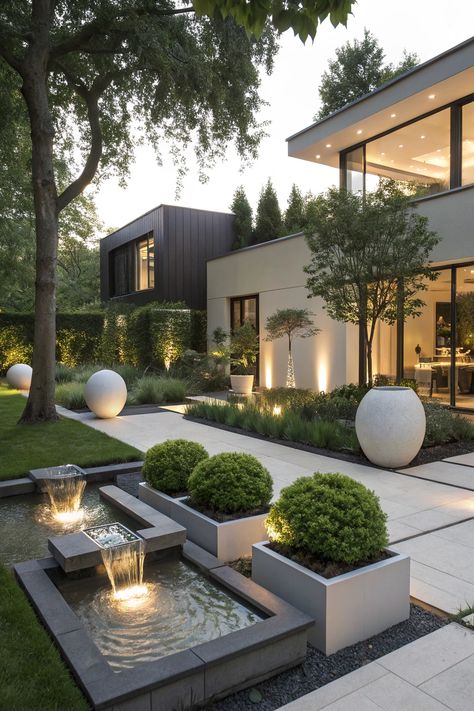
Creating a beautiful outdoor space starts with choosing the right materials. Whether you’re updating your backyard or starting from scratch, the materials you select play a key role in the project’s success. In San Antonio, Texas, where the climate is hot and dry for much of the year, it’s important to use options that can withstand the weather. These choices affect both the look and durability of your yard. From weed control to drainage and visual appeal, every element contributes to a space that lasts and functions well.
This guide highlights essential landscaping materials known for their durability, practicality, and design versatility.
Choose the Right Landscape Stone
Outdoor materials break down for predictable reasons: constant heat exposure, inconsistent soil composition, and poor drainage. In San Antonio, these factors show up fast—surfaces shift, colors fade, and structural elements lose integrity well before their time. That’s because the region experiences intense UV exposure, long periods of drought followed by sudden downpours, and expansive clay soils that swell and shrink with changing moisture levels. These conditions put a lot of stress on outdoor materials. Features like patios, borders, and retaining walls suffer the most when built with materials that aren’t engineered or sourced to handle this local wear and tear. Without proper adaptation, even well-installed elements can crack, fade, or collapse prematurely.
Natural stone handles these stresses better than most options. It holds up under direct sunlight, resists erosion, and remains stable in dry, shifting soils. Sourcing reliable landscape stone in San Antonio ensures the material aligns with the area’s soil and climate conditions, not just its look. This reduces the risk of premature wear and limits the need for constant maintenance.


Mulch for Moisture Control and Clean Borders
Mulch is one of the most versatile materials you can use in your yard. It keeps soil cool, helps retain moisture, and stops weeds from taking over. It also gives flower beds a tidy, finished appearance.
Organic mulch, like shredded bark or wood chips, works great for gardens and around trees. It breaks down slowly, adding nutrients back into the soil. Inorganic options, such as rubber mulch or gravel, are more permanent and require less maintenance. Choose one based on the area you’re covering and the look you want.
Topsoil and Compost for Plant Health
Healthy soil is the foundation of any successful garden. If your yard has rocky or compacted soil, adding a layer of topsoil can give plants a much better-growing environment. Mix in compost to boost nutrients and improve drainage.
Compost adds essential organic matter and supports beneficial microbes in the soil. It’s ideal for vegetable gardens, flower beds, or anywhere you’re planting new greenery. Buying screened topsoil and well-aged compost from a reliable source can save you trouble down the line.


Gravel for Drainage and Decorative Use
Gravel serves multiple functions in landscaping. It’s excellent for improving drainage in areas that tend to collect water. At the same time, it can act as a low-maintenance ground cover or be used for walkways and driveways.
Pea gravel, crushed granite, and decomposed granite are popular options. Each type has its own texture and color, so you can match it to your overall design. Gravel is especially useful in xeriscaping, where water conservation is key.
Pavers and Bricks for Hardscaping
For patios, walkways, and driveways, pavers and bricks offer durability and style. They come in many shapes, sizes, and colors, so it’s easy to create custom patterns that suit your outdoor space.
Concrete pavers are cost-effective and strong. Clay bricks bring a more traditional look. Both options allow for easy repairs—just replace a damaged piece instead of redoing the entire area. Laying them over a proper base prevents shifting and cracking over time.
Edging Materials to Define Spaces
Edging helps separate different parts of your yard and keeps things looking clean. It prevents mulch and gravel from spilling into lawns and defines the borders of garden beds.
You can choose from metal, plastic, stone, or concrete edging. Each material has its pros and cons. Metal offers a sleek, modern line. Stone and concrete are more rustic and blend naturally with other outdoor elements. Whatever you pick, consistent edging makes a big visual impact.


Landscape Fabric to Block Weeds
Weeds can quickly ruin all the hard work you put into a garden. Landscape fabric acts as a barrier beneath mulch or gravel to stop weeds from growing up through the soil. It still allows water and air to pass through, so plants stay healthy.
While it’s not a substitute for good maintenance, landscape fabric cuts down on time spent weeding. Use it in planting beds, under decorative rocks, or beneath walkways. Choose a heavy-duty fabric for the best results.
Decorative Boulders and Accent Rocks
Sometimes all a yard needs is a few bold focal points. Decorative boulders and accent rocks add structure and visual interest to otherwise flat or empty spaces. Use them in corners, around water features, or in dry riverbeds.
Pick stones that match your region’s natural look. In San Antonio and surrounding areas, weathered limestone or granite boulders can give your yard a native, rugged appearance. Placed thoughtfully, they bring balance and depth to your design.
Landscaping isn’t just about looks—it’s about creating an outdoor space that works for your climate, lifestyle, and budget. Whether you’re laying down gravel, sourcing stones in San Antonio, or installing irrigation, using the right materials makes all the difference. Each element has a job to do, and together, they help your yard thrive.
Start with a plan, choose quality materials, and build with purpose. Even simple upgrades can completely transform your outdoor space. Take your time with it, enjoy the process, and don’t be afraid to get creative.
- 8shares
- Facebook0
- Pinterest8
- Twitter0


